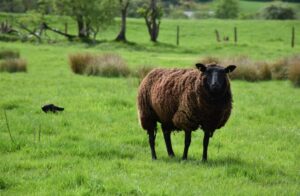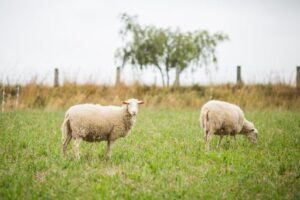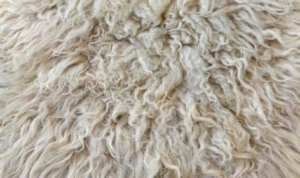Introduction
The ethereal appearance of the white sheep, a significant creature in the animal kingdom, has been a significant aspect of various cultures, literature, and spiritual practices.
White sheep are a common sight in many parts of the world. There are several breeds of white sheep, each with its own unique characteristics. Here are some examples:
- Aberblack: A medium-sized sheep with a white body and a black face.
- Aberdale: A medium-sized sheep with a white body and a black nose.
- Romney: A white sheep breed known for its high-quality wool.
- Texel: A white sheep breed originating from the Netherlands, known for its meat production.
- Merino: A white sheep breed prized for its soft and fine wool.
- Rambouillet: A white sheep breed known for its dense and fine wool.
- Leicester: A white sheep breed with long and curly wool.
- Cheviot: A white sheep breed known for its hardiness and adaptability to various climates.
- Fresian: A white sheep breed originating from the Netherlands, known for its milk production.
- Jacob: A white sheep breed with distinctive black spots on its body.
These are just a few examples of the many breeds of white sheep that exist. Each breed has its own unique characteristics and is suited to different environments and purposes.
How long do sheep live?
Similar to big breed dogs, sheep have a life expectancy of 10 to 12 years. Breeds like the Merino are renowned for having longer lifespans. The oldest sheep recorded in the Guinness Book of World Records survived to be 23 years old.
What are some common sheep breeds?
There are numerous breeds of sheep, each with its own unique qualities. Some common sheep breeds include:
- Bannur Sheep: A breed of domestic sheep originating from the Bannur region of Karnataka, India. It is one of the largest breeds in India and is known for its high-quality wool.
- Barbados Black Belly: A popular sheep breed native to the island of Barbados. These sheep are known for their black wool, which is used to make clothing and other textile products.
- Cheviot Sheep: A hardy breed originating from the Cheviot Hills in England and Scotland. They are commonly used for wool production and have a dense, oily fleece ideal for making yarn and fabric1.
- Columbia Sheep: A medium to large-sized animal popular in the western United States. They are known for their high-quality wool, which is used in a variety of products.
- Corriedale Sheep: A popular breed known for its wool production. Originating in New Zealand, it was developed by crossing Merino and Lincoln sheep. Corriedales have both short and long wool types, typically used for yarn, carpeting, and upholstery.
- Cotswold Sheep: A British breed known for its thick, lustrous wool. Cotswolds are relatively large, with males weighing up to 250 pounds and females up to 200 pounds. They are raised for both meat and wool production.
- Dorper Sheep: A South African breed developed in the 1930s by crossing the Blackhead Persian and Dorset Horn. Dorpers are hardy and thrive in arid conditions while producing high-quality wool.
- Dorset Sheep: A popular breed in the United States.
- Romney Sheep: A white sheep breed known for its high-quality wool.
- Texel: A white sheep breed originating from the Netherlands, known for its meat production.
- Merino: A white sheep breed prized for its soft and fine wool.
- Rambouillet: A white sheep breed known for its dense and fine wool.
- Leicester: A white sheep breed with long and curly wool.
- Jacob: A white sheep breed with distinctive black spots on its body.
What are some other colors of sheep?
Based on breed and genetics, sheep can have a range of colours. White, red, black, grey, silver, brown (moorit), and cream are some hues frequently observed in sheep1. They may be transparent, opaque, solid, patterned, or multicoloured. The patterns might be spotted, piebald, striped, or speckled.
These are a few illustrations of sheep colours:
Black: Sheep with this coloration frequently have black tongues, faces, bodies, and legs. They are regarded as an unusual colour and may even appear in herds of just white or other colors.

Black and White: Some sheep are coloured in a mixture of black and white. They might have spots, be bald, or have patches of both colours on their bodies.
Cream: Cream-colored sheep can be grouped in with white-colored sheep, but their wool or hair is actually cream in color, not bright white like other sheep breeds.

What are some common sheep diseases?
Sheep can be affected by various diseases caused by viruses, bacteria, or parasites. Some common sheep diseases include:
- Footrot: A highly infectious and contagious disease that affects the hooves of sheep.
- Scabby Mouth: A viral disease that causes sores and blisters around the mouth and lips of sheep.
- Listeriosis: A bacterial infection that affects the central nervous system of sheep.
- Pneumonia: An inflammation of the lungs that can be caused by various pathogens.
- Ovine Johne’s Disease: A chronic wasting disease that affects the intestines of sheep.
These are just a few examples of common sheep diseases. Other diseases include bluetongue disease, border disease, Nairobi sheep virus disease, sheep pox, tetanus, abomasal bloat, contagious agalactia, gangrenous mastitis, enzootic ataxia, progressive interstitial pneumonia, and pulmonary adenomatosis.
About wool production.
Wool is a versatile textile fiber that is used across the world for various purposes. It is primarily obtained from sheep and is used in the production of apparel, canvas work, carpets, upholstery, and more. Global wool production is estimated to be around 2 million tonnes per year, with approximately 60% of it being used in the apparel industry.
The manufacturing process of wool involves transforming raw fibers into yarn through either the woollen or worsted processing system. The yarn is then used to create knitted and woven wool textiles and products. Australia is one of the largest producers of wool, with most of its wool being used for the manufacture of apparel products.

How do you take care of white sheep?
You must give sheep shelter, food, water, and medical attention in order to properly care for them. Shelter needs to be cosy, dry, roomy, clean, with sunlight, air, and secure fencing. Water should be cold and fresh, and food should be nourishing and appropriate for them. Brushing, washing, worming, dipping, and trimming should all be part of good health. Regularly watch and examine the sheep for symptoms of illness or parasites.
Here are some more pointers on caring for sheep:
Provide shelter all year long: Your sheep require a year-round shelter that shields them from all the elements. The sun, wind, and rain are some of these components. An excellent alternative to a barn is a three-sided building.
Give the sheep straw bedding: the quantity you provide should be determined by how long the sheep stay within their shelter. It is important to provide them with a decent, thick bedding of hay for colder areas. It will keep them warm and tidy.
Confirm that the quantity of sheep you select can be supported by your pasture: Sheep will graze for roughly 7 hours each day. The average estimate is 10 sheep per acre. The quantity can change according on the size and health of the sheep (ewes with lambs), the state of the pasture (tall fescue grows quickly in the spring and autumn), and the management of your pasture.
Continue the airflow: Keep the shelter doors open and install a fan. This is particularly crucial if you reside.

